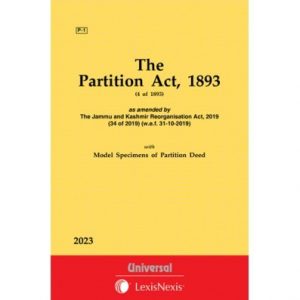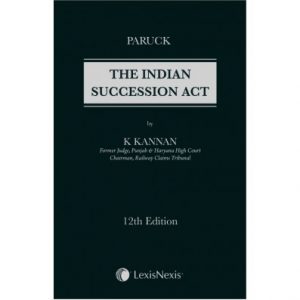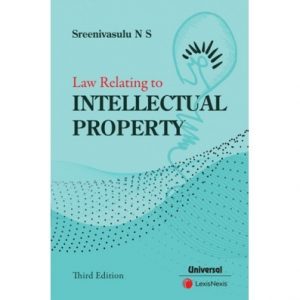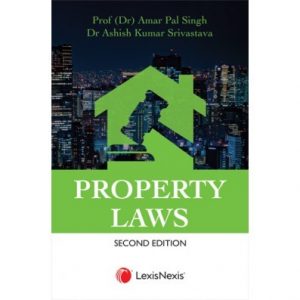Property Laws in India: A Suitable Guide

The property laws in India have gone through a lot of changes and developments over time and are regulated through various acts and regulations. The Constitution, lays down the structure of property laws in the country ensuring that individuals have the authority to own, possess and dispose of property as a constitutional right. The Transfer of Property Act 1882 (TPA) serves as the primary legislation governing property law in India. Over time these laws have been regularly updated to keep up with the dynamic environment of our legal system. In this article we aim to provide an overview of the evolution of property law in India explore, types of properties and shed light on the laws that currently shape the dynamic landscape of property rights and regulations.
What is Property and Property Law?
Property, in a legal sense means any form of interest or right over in a thing. That thing can be tangible/intangible, moveable/immovable etc.
Property law is the set of rules and regulations that governs how a property can be acquired, owned utilized and alienated. It encompasses a range of subjects such as transfer of property procedures, contract act principles and inheritance laws, among others.
History of Property Law in India
Property is one of the fundamental elements of socio-economic system in India. For a long time, the justice system was based on morality, conscience but it lacked uniformity. This system led to a lot of crimes even in the property scenario. Property law was at an advancement phase during the Mughal age. It instilled Zamindari System into the land tenure by the Mughals. This system made land owned by a king to give it on lease to zamindars who in turn gave the land for cultivation to the farmers and collected taxes from them. The British East India company started collecting lands in India during the 18th-century. There were several rebellions by peasants as the company’s land acquisition policies were characterized on grounds of arbitrariness and exploitation. In 1885, The Indian National Congress advocated for land reforms in India. The government of “Independent India” promulgated several legislations relating to land reforms. The Zamindar system was finally eliminated through Zamindari Abolition Act, 1956 and the people that cultivated the land now had ownership rights over it.
In the case of Vineeta Sharma vs Rakesh Sharma (2020) 9 SCC 1, the apex court held that a woman/daughter also has an equal right over her ancestral property. Since its independence, property law in India has changed a lot. With the changing trends, the government has come up with several new laws and regulations.
What are the types of Property Law in India?
There are 3 major acts that deal with Property Laws in India
1. Transfer of Property Act, 1882:
The Transfer of Property Act is a law, in India that governs and establishes guidelines and procedures for the transfer of property more specifically, immovable property like land and real estate. It sets out the principles and procedures for transferring property through means such as sale, mortgage, lease, gift and exchange. Its primary purpose is to facilitate the transfer of property, from one individual to another.
Related Book:

This exceptional piece of work authored by Sir Mulla and published by LexisNexis provides a commentary, on the TPA. This esteemed legal masterpiece remains the go to reference for scholars and practitioners. This new and updated edition contains key features like landmark judgements, legal development etc.
2. Partition Act of 1893:
The Partition Act of 1893 is significant, in the realm of property law because it addresses the challenges that arise when properties owned jointly need to be divided among its co-owners. This legislation provides a framework that helps both courts and individuals navigate the complexities of partition cases ensuring a fair distribution of property rights.
Related Book:

LexisNexis’s bare act on Partition Act, 1893 contains all provisions and amendments of the Act. It stands tall amidst others by providing Model Specimens of Partition deed which is must have for lawyers, practitioners and common individuals too.
3. Indian Succession Act, 1925:
The succession law sets out the guidelines, for how property’s distributed when someone dies either with or without a will. The Indian Succession Act of 1925 specifically deals with cases involving a written will (testamentary succession). However, if there is no written will, the laws regarding intestate succession or unwilled succession outlined in the Hindu Succession Act of 1956 would apply.
Related Book:

Book: Paruck and K. Kannan’s Book on Indian Succession Act published by LexisNexis is the most comprehensive and an exceptional piece on Indian Succession Law. Everything has been elucidated in a clear and systematic manner. The book aims to cover all judgments from the Supreme Court and various High Courts and includes updates reflecting any changes in legislation.
Types of Property under Transfer of Property Act, 1882
Movable property:
It is the type of property which is not affixed to land can be moved from one place to another. According to Section 2(9) of the Registration Act of 1908, movable property includes “standing timber, growing crops and grass, fruit upon and juice in trees, and property of every other description, except immovable property.”
Immovable Property:
Things rooted or attached to the earth and which are not reasonably capable of being moved from one place to another are called immovable property. Section 2(6) of the Registration Act of 1908 states that an “Immovable property means and includes land, buildings, hereditary allowances, rights to ways, lights, or any other benefit to arise out of the land, and things attached to the earth or permanently fastened to anything which is attached to the earth, but not standing timber, growing crops nor grass.”
Other types of Property in India
Intellectual Property:
As per the definition of WIPO, Intellectual property (IP) encompasses forms of creations including inventions, literature and art designs as well, as symbols, names and images. The legal protection of IP involves patents, copyrights and trademarks that empower individuals to gain acknowledgment or financial rewards for their creative creations or inventions using their intellect.
Related Book:
“Law Relating to Intellectual Property” by Sreenivasulu N S

Sreenivasulu’s book on Law relating to IP covers a broad range of topics and provides an examination of intellectual property law exploring topics such, as patents, copyright, designs, trademarks, trade secrets, GI’s, semiconductor chips and plant varieties. The author aims to guide readers through the complexities of intellectual property law, in regions including India, USA, UK.
Corporeal and Incorporeal Property:
Corporeal property is a property wherein the person has right over ownership of a tangible or material things, meaning, those things can be touched or seen, for e.g- cars, devices etc, whereas, Incorporeal property refers to ownership rights over property which cannot be seen or touched i.e. Intangible in nature. For e.g- IPR, easements etc.
Public and Private Property:
Public property is owned by the government and all the rights over it are available to the government. The government mainly uses it for public purposes, e.g. Parks, public hospitals etc. On the other hand, Private Property is a property whereby all the rights vested with the property are with a private individual other than government. The private property may be his own house, his garden, car etc.
Best Books to know about Property Law in India
“Property Laws” by Prof (Dr) AP Singh & Dr Ashish Kumar Srivastava”:

This book is an exceptional read for students, especially UG and PG students. It explores the development of aspects of property law by providing explanations of the important and intricate doctrines and principals involved. Additionally, it also covers the legal considerations associated with these concepts.
“Textbook on the Transfer of Property Act” by Dr Avtar Singh & Prof (Dr) Harpreet Kaur:

This book provides an analytical take of the TPA, 1882. It offers a thorough explanation of the concepts through illustrations and case laws. Towards the conclusion of each chapter, the book includes summaries, FAQs and practical exercises, with solutions. This comprehensive approach aims to provide an understanding of the subject matter and is ideal for law students and practitioners.
Conclusion
To conclude, the property laws in India plays a vital role in regulating and safeguarding the rights of individuals concerning to land and real estates. With the rapid evolution of time, these laws have evolved to curb the diverse needs of a rapidly transforming society. As India is progressing way faster than it ever did before, a dynamic and responsive framework will be pivotal in fostering sustainable development, social justice, and harmony within the dimension of property ownership and transactions.
FAQs
- What is the basic law of property?
Ans: The Transfer of Property Act, 1882 (TPA) is the basic law of property.
- Who is the legal owner of land in India?
Ans: The person who name is registered in the land records is the legal owner of such land.
- Which law is related to property?
Ans: The TPA, Partition Act and Indian Succession Act.
- How do you prove ownership of a property in India?
Ans: Sale Deeds, Khata Certificates, Land Registration etc.
- Who is the owner of father’s property in indian law?
Ans: Daughters and Sons, both have the legal right over their father’s property.

